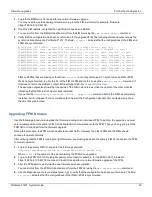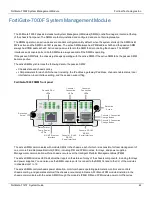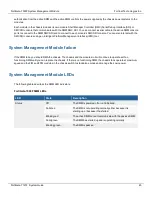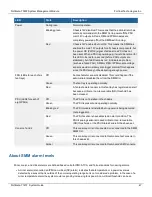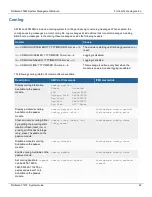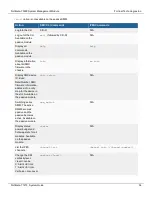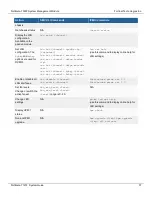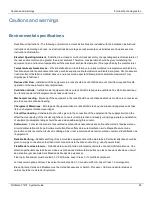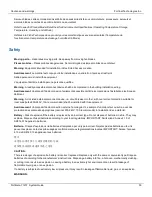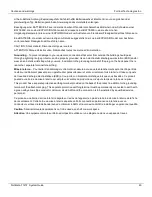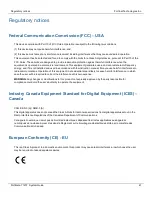
FortiGate-7000F System Management Module
Fortinet Technologies Inc.
upper non-critical (UNC) threshold (for example, a high temperature or a high power level ) or a lower non-critical
(UNC) threshold (for example, a low power level).
l
A major alarm (also called an IPMI critical or critical recoverable (CR) alarm) indicates a temperature or power level
was detected by a sensor that is far enough outside of the normal operating range to require attention from the
operator. It could also mean that the system itself cannot correct the alarm. For example, the cooling system cannot
provide enough cooling to reduce the temperature. It could also mean that conditions are close to being outside of
the allowed operating range. For example, the temperature is close to exceeding the allowed operating
temperature. A critical threshold can also be an upper critical (UC) threshold (for example, a high temperature or a
high power level ) or a lower critical (LC) threshold (for example, a low power level).
l
A critical alarm (also called an IPMI non-recoverable (NR) alarm) indicates a temperature or power level was
detected by a sensor that is outside of the allowed operating range and could potentially cause physical damage.
You can use the SMM CLI to get details about alarm sensors, thresholds, and the events that trigger alarms.
Using the console ports
The active SMM includes two console ports named Console 1 and Console 2 that can be used to connect to any serial
console in the chassis. This includes the SMM CLI, the FortiOS CLIs (also called host CLIs) of the FIM and FPM
modules in chassis slots 1 to 12 and all of the SMC SDI consoles in the chassis.
The FIMs, FPMs, and SMM, all have an SMC SDI console. These consoles are used for low
level programming of the module using an IPMI tool and are disabled by default. You can
enable serial access to individual SMC SDI consoles from the SMM SMC SDI CLI using the
command
serial set sdi enable <slot>
. During normal operation you may want to
access the SMM SMC SDI CLI, you shouldn't normally require access to individual FIM and
FPM SMC SDI consoles.
By default when the chassis first starts up Console 1 is connected to the FortiOS CLI of the FIM module in slot 1 and
Console 2 is disconnected.
The default settings for connecting to each console port are: Baud Rate (bps) 9600, Data bits 8, Parity None, Stop bits 1,
and Flow Control None.
The FIMs and FPMs use the standard FortiOS CLI. The SMC SDI CLIs are described in this chapter.
You can use the console connection change buttons to select the CLI that each console port is connected to.
l
Press the button to cycle through the FIM and FPM FortiOS CLIs and disconnect this console.
l
Press and hold the button to connect to the SMM SMC SDI CLI. You can also cycle through each module's SMC
SDI CLI if they are enabled.
The console's LEDs indicate what it is connected to. If no LED is lit the console is either connected to the SMM SMC SDI
console or disconnected. Both console ports cannot be connected to the same CLI at the same time. If a console button
press would cause a conflict that module is skipped. If one of the console ports is disconnected then the other console
port can connect to any CLI.
If you connect a PC to one of the SMM console ports with a serial cable and open a terminal session you begin by
pressing Ctrl-T to enable console switching mode, then you can do the following:
l
Press Ctrl-T multiple times to cycle through the FIM and FPM module FortiOS CLIs (the new destination is displayed
in the terminal window). If you press Ctrl-T after connecting to the FPM module in slot 6 the console is disconnected.
Press Ctrl-T again to start over again at slot 1.
FortiGate-7121F System Guide
48






